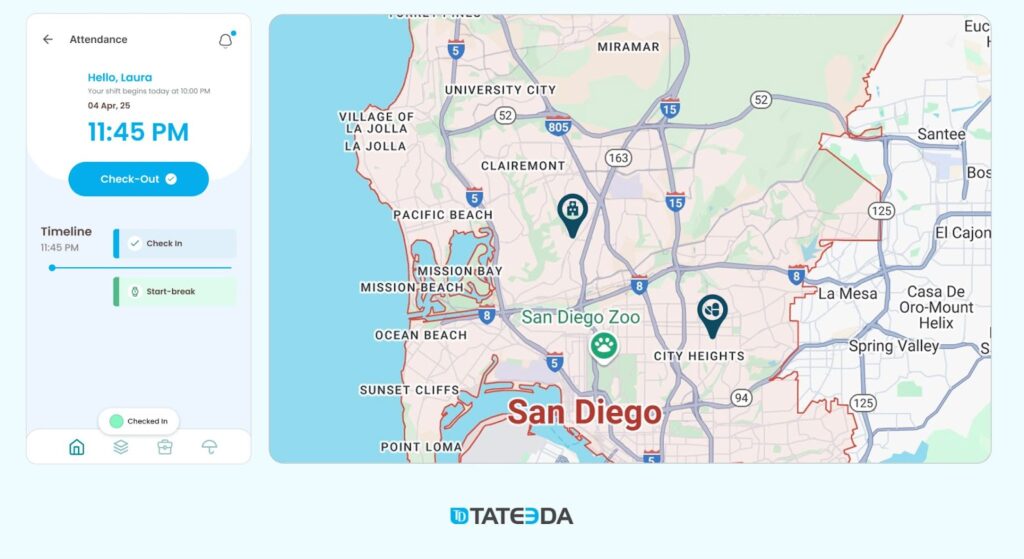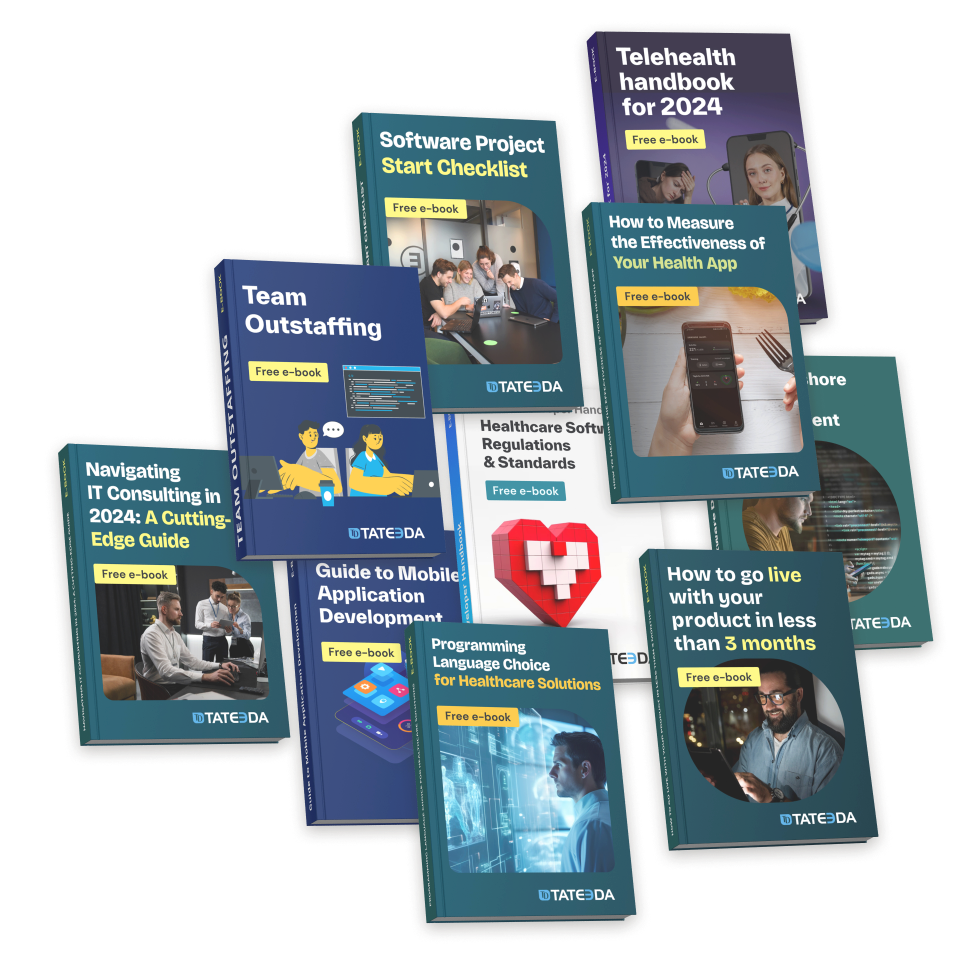How to Select the Ideal Staffing Software for Your Healthcare Team

Choosing the right tools to support your caregivers is critical. In this article, you’ll learn how to identify the best healthcare staffing software solutions for your organization’s unique needs in the United States, as well as what criteria to use when you choose healthcare staffing solution providers. We’ll cover essential system features, uncover hidden costs, and walk you through the process of vetting vendors so you can invest with confidence.
You need to choose healthcare staffing solution providers that understand your compliance requirements, budget constraints, and the technology ecosystem in the United States healthcare industry. The question “how to select medical staffing software” involves balancing price against feature set, integration complexity, and user adoption challenges, which requires thorough research.
A truly robust healthcare staffing platform anticipates growth and adapts as your organization evolves, so it’s worth taking the time to compare, demo, and ask tough questions before you commit. By the end of this guide, you’ll know exactly how to evaluate options and select a platform that keeps both your clinicians and your CFOs happy while avoiding the costs of poor healthcare staffing…
Most leading healthcare staffing platforms share a core set of functions designed to address real-world HR management demands. When evaluating options, here’s a list of the medical staffing software features to consider and look for:
- Automated scheduling: Intelligent shift matching based on clinician availability, credentials, and patient ratios, including an integrated custom AI agent solution for augmented decisions.
- Credential & compliance tracking: Live medical specialists’ license verification and automated expiration alerts/notifications to all stakeholders.
- Time & attendance management: Secure clock-in/out, geofencing, and idle-time detection to prevent overtime overages and PAGA violations (local California labor regulations).
- Overtime & budget controls: Configurable medical employee pay rules, premium calculations, and alerts for unauthorized hours.
- Self-service portals: Mobile-friendly interfaces where staff can swap shifts, request PTO, manage assignments, and view schedules.
- Reporting & analytics: Dashboards that consolidate staffing costs, fill rates, and workforce utilization metrics.
- Integration capabilities: API connectors for custom software integration solutions, EHR, payroll, billing, and HRIS systems to maintain data consistency.
- Alerts & notifications: Automated email or SMS reminders for shift changes, low staffing levels, and credential renewals.
Finding the best healthcare staffing software isn’t straightforward. Solutions can be expensive, often costing tens of thousands of dollars per year, and vendors vary widely in terms of flexibility and support.
Don’t Know How to Select Medical Staffing Software?
Let our healthcare HR system experts recommend a customized solution for you.
Why Are We Competent to Speak About Best Healthcare Staffing Software?
That expertise didn’t come out of thin air. We partnered for years with AYA Healthcare (one of the largest travel nurse services providers in the USA) to build financial reporting modules, advanced time‐tracking engines, mobile apps, and secure credentialing APIs that now support thousands of clinicians on demand.
Because we’ve integrated healthcare payroll systems, EHR connectors (Epic, Cerner, Optum), and AI‐driven scheduling logic for AYA Healthcare, we understand exactly how a healthcare staffing platform must perform under real‐world pressures.
That hands‐on experience shows why we’re qualified to guide you toward the best healthcare staffing software solutions and make sure you choose a healthcare staffing solution that won’t break under heavy volume or your budget!
Table of Contents
Identifying the Top Healthcare Staffing Systems on the Market
A solid starting point for a best healthcare staffing software comparison is to identify the platforms most commonly used by providers and clinicians today. When you’re figuring out how to select medical staffing software, begin by surveying the marketplace for solutions that address your unique needs.
This process gives you visibility into the top features of healthcare staffing platforms already proven in real-world settings.
Methods for Researching and Shortlisting Healthcare Staffing Solutions:
- Manual Web Search and Feature Tables: Visit official product websites and industry review sites to compile a list of candidate platforms. Create a spreadsheet of top features of healthcare staffing platforms, such as automated scheduling, credential tracking, time & attendance, self-service portals, analytics, and API integrations with Epic or Cerner, and rate each solution against these criteria for side-by-side analysis.
- Leveraging AI Research Tools: Use a paid AI assistant (for example, ChatGPT’s web-enabled version or similar enterprise-grade AI) to gather and summarize information about leading vendors. Prompt the AI to focus on core and additional features highlighted earlier, and to rank products based on factors like user adoption, compliance capabilities, and integration flexibility.
- Collecting User Feedback from Public Directories: Consult G2, Capterra, and other review platforms to read firsthand experiences. Pay attention to recurring praises or criticisms, such as ease of use, customer support quality, or pricing transparency, to identify common pros and cons.
- Engaging with Peer Networks and Industry Forums: Poll colleagues at healthcare conferences, professional groups on LinkedIn, or specialized forums for nurse managers and HR directors. Real-life conversations can reveal hidden gems or cautionary tales that aren’t always visible online.
- Consulting Independent Analyst Reports: Review market research from firms like KLAS, Forrester, or Gartner (if accessible), which often publish comparative overviews and maturity scores for staffing systems. These reports can provide insights into industry trends and emerging players.
- Partnering with Custom Development Experts: Consider working with a custom healthcare software development firm in the US to draft a detailed system architecture and feature outline based on your unique staffing workflows, compliance needs, and integration requirements. This approach helps translate your specific needs into a technical blueprint, ensuring any solution you select can be configured to fit seamlessly.
Once you’ve gathered data through these methods, you should create a table that reflects key information, price range, core modules, integration options, and unique selling points for each shortlisted system.
Below is a sample comparison table based on the top solutions known in 2025. Use this as a template to help you choose a healthcare staffing solution that aligns with your organization’s goals and budget:
| Product | Pros | Cons | Special Features |
| OnShift | – All-in-one suite: scheduling, payroll, engagement – User-friendly mobile app for shift swaps | – Primarily tailored for long-term care – Higher entry cost for smaller facilities | – Built-in credential tracking and overtime alerts – Resident engagement and recruitment modules |
| ShiftWizard | – Intuitive, healthcare-specific interface – Robust license and certification management | – Learning curve due to multiple icons and color codes – Occasional reporting quirks | – Real-time staff communication tools – Guided, rule-based scheduling templates |
| QGenda | – Manages complex physician rotations and on-call schedules – Integrated credentialing and forecasting | – Premium pricing may be prohibitive for small sites – Steep initial setup and learning curve | – Predictive staffing algorithms – Single-pane view for multi-department coverage |
| UKG (Kronos) | – Scalable enterprise-grade scheduling and timekeeping – Deep labor-law compliance and analytics | – Complex configuration and lengthy implementation – May be overkill for very small clinics | – Built-in payroll-based journal (PBJ) reporting – Geofenced clock-in/out and mobile self-service |
| SmartLinx | – Strong compliance focus with automated PBJ reports – Integrated scheduling, payroll, and HR modules | – Setup can be time-consuming; it requires careful configuration – The interface may appear less modern in some areas | – Skill-based shift matching across multiple facilities – Real-time workforce analytics dashboards |
Identifying the Top Features for the Best Healthcare Staffing Software
When choosing HR software for healthcare, understanding the top features of healthcare staffing platforms is essential. Below are eight critical capabilities—each described with practical context and broken down into the specific functionality you should evaluate in your healthcare staffing software buying guide.
Automated Scheduling + Shift Optimization 📅⚙️
Efficient scheduling lies at the heart of any healthcare staffing software buying guide. A robust platform uses algorithms to align staff availability, skills, and patient demand, eliminating manual rota-building and reducing coverage gaps. This functionality speeds up the entire process and ensures consistent, fair work distribution.
- Rule-based matching that pairs caregiver qualifications with open shifts
- Demand forecasting driven by historical census and absence data
- Fair-rotation engines that balance weekends, nights, and holiday assignments.
Healthcare Staff Credential + Compliance Management 🩺✔️
One of the top features of healthcare staffing platforms is centralized credential tracking. Software should automate verification, store licensure documents securely, and generate audit-ready logs to help you stay inspection-ready. By streamlining compliance tasks, you reduce risk and free your team from manual record-keeping.
- Automated license and certification checks against authoritative sources
- Expiration reminders sent well in advance to both managers and staff
- Immutable audit trails that prove compliance for regulators
Time & Attendance Tracking in Healthcare Staff ⏰📝
When choosing HR software for healthcare, accurate capture of work hours protects your budget and your team. Integrated time-tracking prevents payroll disputes, enforces break rules, and guards against labor-law violations. This ensures payroll accuracy and reduces the risk of costly overtime claims.
- Secure clock-in/out via geofencing, badge readers, or a mobile app
- Idle-time detection to flag missed breaks or extended off-clock periods
- Direct sync with payroll systems for on-the-fly pay calculations.
Self-Service Portals & Mobile Access 📱🔓
Modern caregivers expect the flexibility to manage their own schedules. A self-service portal lets staff swap shifts, request time off, and view assignments on any device. This empowerment boosts satisfaction, cuts administrative overhead, and supports a mobile workforce.
- Mobile dashboards showing upcoming shifts and open slots
- In-app shift-swap and time-off request workflows for rapid approvals
- Role-based views that surface only relevant options to each user.
Nurse Overtime & Budget Control ⏳💲
A key chapter in your best healthcare staffing software comparison involves financial safeguards. Software should enforce pay-rule caps, trigger alerts when labor budgets are exceeded, and model labor costs before finalizing schedules. This prevents runaway overtime and keeps your staffing spend in check.
- Configurable thresholds for daily and weekly overtime limits
- Pre-approval warnings when proposed staffing breaches the budget
- What-if forecasting to estimate labor costs under different scenarios.

Analytics & Reporting 📊🔍
Data-driven decision-making is crucial when you want to know how to select medical staffing software. Look for built-in dashboards that visualize fill rates, turnover drivers, and cost variances. Export options enable you to integrate staffing metrics into broader business intelligence (BI) tools for more comprehensive strategic planning.
- Real-time charts of coverage vs. patient census ratios
- Turnover and vacancy trend reports for proactive hiring
- CSV/Excel exports to integrate with enterprise analytics platforms.
Integration & API Connectivity 🔌🌐
Interoperability governs whether your staffing system thrives or languishes. What to look for in healthcare staffing software includes availability of cloud-native medical staffing software architecture, open RESTful APIs, HL7/FHIR support, and prebuilt connectors. Seamless data flow between EHR, payroll, and HRIS minimizes manual entry and enhances accuracy.
- Open API endpoints for shift, credential, and payroll data
- FHIR-based interoperability with clinical and administrative systems
- Pre-configured integrations for popular HRIS and billing platforms.
Alerts & Notifications 🔔⚠️
Proactive communication keeps schedules on track and credentials current. Your software should offer customizable alerts (via email, SMS, or in-app) so managers and clinicians never miss a critical update. This feature transforms reactive firefighting into continuous, efficient coordination.
- Configurable channels for low-staff warnings and expiring credentials
- Escalation paths to ensure critical alerts reach the right stakeholders
- Automated reminders for shift confirmations and policy acknowledgments
By focusing on these capabilities, you’ll build a healthcare staffing software buying guide that lays out exactly what to look for in healthcare staffing software, empowering you to choose healthcare staffing solution providers who deliver real operational impact.
With these feature breakdowns and a structured comparison, you’ll gain clarity on what to look for in healthcare staffing software and be equipped to choose healthcare staffing solution providers that align with your clinical, technical, and budgetary requirements.
Use this template to compare how to select medical staffing software and conduct a best healthcare staffing software comparison across vendors:
| Feature | OnShift | QGenda | ShiftWizard |
| Automated Scheduling | Demand-driven suggestions based on historic fill rates and staff preferences | Rule-based engine handles rotations, on-call, and specialty assignments | Guided templates speed weekly roster creation |
| Credential & Compliance | Live license checks via state board API | Credential rules embedded in scheduling prevent unqualified assignments | Manual upload with reminder alerts |
| Time & Attendance | Geofencing and badge readers with instant payroll sync | Secure mobile punch for remote locations | Break-enforcement flagging in real time |
| Self-Service & Mobile | One-tap shift claim, custom portal widgets | Personalized on-call views and schedule alerts | In-app messaging for shift swaps |
| Overtime & Budget Control | Pre-approval warnings when budget thresholds are exceeded | “What-if” cost projections before schedules finalize | Auto-flag shifts triggering overtime rules |
| Analytics & Reporting | Labor vs. census dashboards, export to BI tools | Utilization metrics by role/location, trend analysis | Automated turnover and fill-rate reports |
| Integration & API | Native ADP, Kronos, Workday connectors | FHIR APIs for Epic and Cerner | Webhooks for payroll and billing modules |
| Alerts & Notifications | Mobile push alerts for unfilled shifts and compliance gaps | Escalation chain for unstaffed shifts | Custom reminders for credentials and policy acknowledgments |
Want to Use the Top Features of Healthcare Staffing Platforms?
Our experienced software development team, operating since 2013, can help you build a custom solution that brings these capabilities to your organization.
Ensuring PAGA & CCPA Compliance in California Healthcare Staffing Software
California’s labor and privacy laws set some of the most rigorous standards in the nation. For any custom software development company in California, meeting PAGA and CCPA requirements isn’t optional—it’s essential. Here’s how an HR platform must be engineered to protect both your workforce and your organization:
🍽️ Making Sure Breaks Happen
California’s Private Attorneys General Act (PAGA) imposes steep penalties for missed meal or rest breaks and unauthorized overtime. A compliant system must:
- Offer geofenced clock-in/out and mobile punch features to verify on-site presence
- Enforce mandatory meal and rest intervals via scheduling locks or pop-up reminders
- Generate exception alerts when employees exceed daily or weekly thresholds.
💲 Making Overtime Fair
To avoid surprise fines and premium claims, your software needs a pay-rule engine that:
- Applies California’s specific daily, weekly, and split-shift overtime rates
- Calculates double-time and holiday premiums instantly as shifts are built
- Flags potential PAGA exposures before managers finalize schedules.
📑 Reports That Stand Up to Scrutiny
State auditors require transparent, tamper-proof records. A PAGA-compliant dashboard should:
- Export detailed timesheet, break, and premium data by employee or department
- Maintain append-only logs that prove the authenticity of every punch and adjustment
- Provide preconfigured reports that satisfy PAGA investigation demands.
🔐 Locking Down Your Data under CCPA
The California Consumer Privacy Act (CCPA) grants candidates and staff rights over their personal data. Your system must:
- Capture and record consent for data collection at the onboarding and renewal steps
- Offer self-service tools for data-subject access, correction, and deletion requests
- Enforce automated retention schedules to purge or anonymize records as required.
📬 Honoring Privacy Requests
Protecting both health and personal data requires a layered approach. A California custom software development company should implement:
- Role-based access controls and zero-trust network segmentation
- Encryption at rest and in transit for all staffing and patient records
- Secure API orchestration that limits data exposure to only necessary services.
🔄📑 Keeping Rules Up to Date
Regulations evolve. Ongoing maintenance ensures your platform stays current:
- Automated checks for law changes in PAGA thresholds or CCPA scope
- Modular pay-rule and privacy-policy components that your team can update
- Integration with compliance-as-a-service tools to receive real-time guidance.

Why Build Custom Software Instead of Choosing an Off-the-Shelf Solution?
When you’re wondering how to select medical staffing software, it’s tempting to lean on established products with proven track records. Off-the-shelf platforms often hit many of the top features of healthcare staffing platforms, i.e., automated scheduling, credential management, analytics dashboards, and self-service portals. However, they may fall short on your evaluation criteria for staffing software when it comes to unique workflows, deep EHR integration, or specialized compliance rules. Rigid data models can force you to adapt your processes around the software rather than the other way around, and limited APIs or proprietary architectures can hinder your long-term IT strategy.
By contrast, a custom-built system can be designed from the ground up to incorporate your exact specifications—from selecting applicant tracking software for hospitals that aligns with your HR approval chains to healthcare scheduling software selection tips like real-time fatigue alerts.
Although medical staffing software features to consider in a bespoke build may require a larger upfront investment and longer development cycle, the result is a platform that fits seamlessly, scales with growth, and reduces costly workarounds. In the long run, custom development often pays dividends through lower integration overhead, faster onboarding for new modules, and the freedom to evolve with changing regulations or service lines.
| Criteria | Off-the-Shelf | Custom Development |
| Workflow Fit | Predefined workflows may not match your staffing or credentialing processes | Architected around your exact shift patterns, approvals and rules |
| Integration | Architected around your exact shift patterns, approvals, and rules | Native APIs built to integrate with your EHR, payroll, and BI tools |
| Compliance & Reporting | Standard compliance modules may miss state-specific rules (e.g. PAGA, CCPA) | Custom compliance engines enforce California-specific regulations |
| Feature Gaps | May lack niche functions like AI-driven fatigue alerts or advanced credential validation | Every feature, from automated breaks to skills-based matching, is yours |
| Total Cost of Ownership | Lower initial cost but higher fees for add-ons, user licenses, and upgrades | Higher upfront investment, but predictable maintenance and scaling |
| Agility & Roadmap | Vendor-driven roadmaps; feature requests subject to backlog | You control the release schedule, priority, and future roadmap |

The Final Word: How TATEEDA Supports Your Ideal Healthcare Staffing Solution
We’ve explored the essentials of choosing medical staffing software, highlighted the top features of healthcare staffing platforms, and walked through effective research methods, from creating manual feature tables to using AI-enhanced analyses and user reviews.
You’ve gained insight into the importance of complying with California’s PAGA and CCPA regulations, as well as why custom development, though it comes with a higher cost, offers a perfect fit for your workflows, seamless integrations with EHR and payroll systems, and tailored reporting that meets your specific needs.
When off-the-shelf solutions fall short, a bespoke system emerges as a wise, long-term investment. If you’re ready to create a platform that truly addresses every requirement, reach out to TATEEDA for a free consultation, and let’s work together to design your custom staffing solution.








